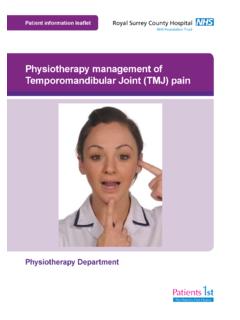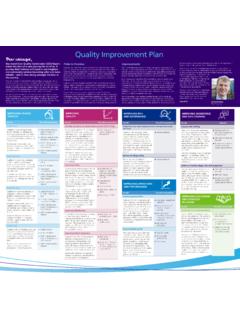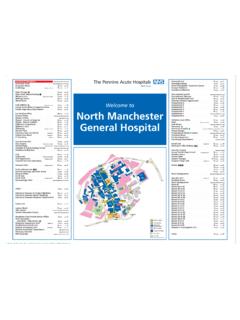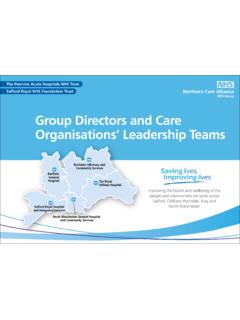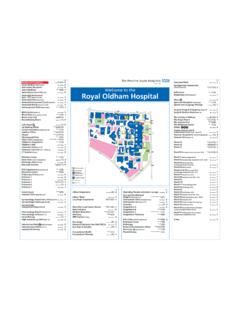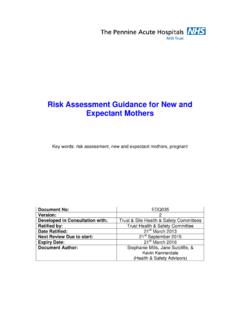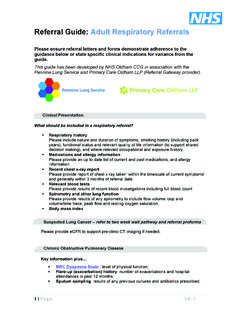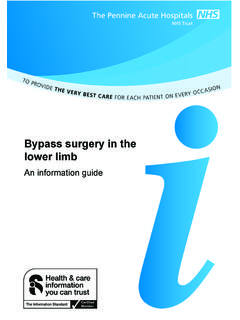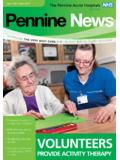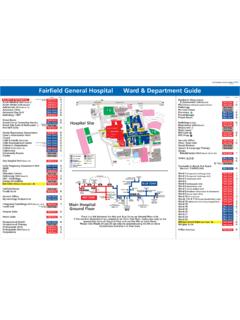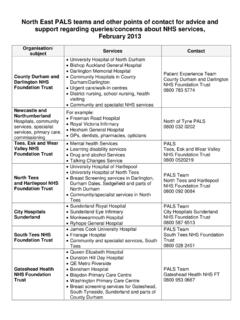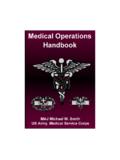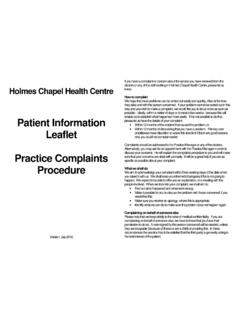Transcription of Stockings (AES) Anti-embolism
1 TO. PRO. VIDE. THE V ION. E RY B E E R Y O CC A S. ST C ARE FOR. E ACH PAT I E N T O N E V. Anti-embolism Stockings (AES). An information guide Anti-embolism Stockings (AES). What are they? They are Stockings made with firm elastic, giving graduated compression to the leg from the ankle up to the knee. These Stockings help to reduce the risk of a blood clot or deep vein thrombosis (DVT) forming in your legs whilst you are less active in hospital. How do anti -embolisation Stockings work? The graduated compression is thought to have the effect of speeding up' the circulation of the blood in your veins. This makes clotting less likely. How long will I need to wear them?
2 You will need to wear the Stockings day and night until you get back to a much-improved level of mobility. Usually there is no need to wear them after discharge from hospital (unless your doctor or nurse gives specific instructions to do so). If you have had a DVT in the past, extra advice must be sought from the nursing staff or your consultant. A new pair of Stockings should be provided if they become soiled. Please ask staff if you need a clean pair. Please send the dirty pair home to be washed. 2. How do I put the Stockings on? put your hand into the Stockings as far as the heel pinch the heel and turn the stocking inside out as far as possible put the stocking over your foot and heel.
3 The centre of your heel should be over the heel pocket of the stocking pull the stocking up and fit around your ankle and up the calf. Ensure that the top of the stocking lies just below the knee smooth out any excess material, making sure the heel is in the heel pocket. Make sure your toes are clearly visible, and then allow the open toe section to sit below the toe at the underside of the foot. Staff are always available to assist you if necessary. 3. The following picture will help guide you in putting your Stockings on. 4. Are there any pitfalls to avoid or problems to look out for? Don't leave the Stockings rolled down as they might form a tight band around your legs which cancels the benefit of wearing them.
4 The Stockings should be taken off once a day for hygiene purposes and to check for any possible skin changes avoid using ointments, oils or lanolin on your skin as these can damage the stocking's elastic fibres if a rash develops, it may mean you have an allergy to the elastic fibres in the Stockings . Remove the Stockings and inform the nursing team be alert to pain and numbness, pins and needles and discolouration of the toes. This could be a sign that the Stockings are too tight. Inform staff immediately if this is the case and they will remove the Stockings when moving around, please make sure you are wearing slippers or shoes as the Stockings can be very slippery on hard floors.
5 5. Stop wearing your Stockings and discuss with your GP if you develop any of the following: ulcers to your leg or foot peripheral arterial disease (narrowing of vessels carrying blood). peripheral neuropathy (damage to nerves). cellulitis (infection in the skin). oedema due to heart failure (build up of fluid due to flow being reduced out of the heart). pulmonary Oedema (fluid in the lungs). peripheral vascular disease (narrowing of vessels carrying blood). Remember: if you have any of the above problems, please don't delay. Speak to one of the ward staff if you are in hospital or contact your GP surgery if you are at home. How do I look after my Stockings at home?
6 If your doctor has advised you to continue wearing your Stockings after discharge from hospital, please remember to: put on clean Stockings at least every three days, or earlier if they have become soiled wash Stockings by hand or in a machine at 40 C or above. do not use bleach or fabric conditioner hang to dry. Do not tumble dry or leave to dry on the radiator. 6. What else can I do to prevent a DVT from developing? you can exercise your legs whilst in bed, rotating each ankle through a 360 turn. Carry this out on each leg, clockwise and anti - clockwise, ten times sitting with your legs straight out in front of you, point your toes forward as far as you can, then, keeping your legs straight, point your toes up towards your chest.
7 Repeat ten times for each foot if you have no restriction on your fluid intake, try to drink at least one and a half litres of fluid each day nursing staff may give you an injection in your upper arm or stomach each day. This is a drug to help keep your blood thin and prevent it from clotting. If you have any further queries about your anti -embolisation Stockings , please ask your doctor or nurse. 7. If English is not your frst language and you need help, please contact the Ethnic Health Team on 0161 627 8770. Je eli angielski nie jest twoim pierwszym j zykiem i potrzebujesz pomocy prosz skontaktowa . si z za og Ethnic Health pod numerem telefonu 0161 627 8770.
8 For general enquiries please contact the Patient Advice and Liaison Service (PALS) on 0161 604 5897. For enquiries regarding clinic appointments, clinical care and treatment please contact 0161 624 0420 and the Switchboard Operator will put you through to the correct department / service Date of publication: August 2006. Date of review: January 2016. Date of next review: January 2019. Ref: PI_SU_235. The Pennine Acute Hospitals NHS Trust Wood pulp sourced from sustainable forests
